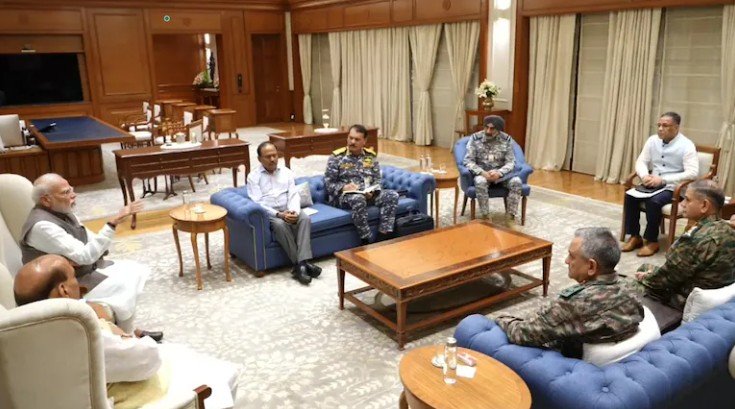
Wing Commander Vyomika Singh Confirms India’s Precision Strike on Pakistani Air Defence Radar During Cross-Border Escalation
- Breaking NewsHEADLINESNATION
- May 9, 2025
- No Comment
- 26
As tensions along the western border between India and Pakistan reached critical levels for the second consecutive night, the Indian armed forces responded with decisive precision, neutralising an air defence radar deep inside Pakistani territory. The strike marks the second successful dismantling of a Pakistani air defence system in as many days — a move that not only neutralised a critical enemy asset but also demonstrated India’s growing dominance in modern warfare tactics and indigenous drone operations.
Addressing a high-level joint press briefing of the Ministry of Defence and the Ministry of External Affairs in New Delhi on Friday evening, Wing Commander Vyomika Singh confirmed that Pakistan had launched another round of aerial provocations overnight. Between Thursday and Friday, Pakistani forces violated Indian airspace at no fewer than 36 locations, from Leh in Ladakh to Sir Creek in coastal Gujarat. The large-scale drone activity—estimated between 300 to 400 aerial intrusions—was a clear attempt to test India’s air defence grid and to gather intelligence on strategic assets.
India, however, stood alert and prepared. Most of the intruding drones were intercepted and neutralised, including one armed UAV that attempted a direct strike on the Bathinda military station in Punjab. The intruder was detected and brought down swiftly, showcasing the operational readiness and technological edge of India’s integrated air surveillance network.
What followed was a calculated and strategic retaliation. Indian forces launched armed drones targeting four high-value air defence sites inside Pakistan. One of these drones successfully destroyed a key radar installation — a critical “eye” of the enemy’s defence system. Military experts have noted that once the radar is knocked out, the entire air defence setup is rendered blind, unable to detect or intercept incoming aerial threats. The symbolism of this strike is as powerful as the tactical outcome—it signals a shift in the conflict dynamics and India’s offensive defence posture.
This recent action follows Pakistan’s earlier failed attempts to strike Indian military facilities in as many as 15 cities, including Chandigarh, Bhuj, and Srinagar. In response to these attacks, India had already initiated the second phase of its precision military campaign—codenamed Operation Sindoor—early Thursday. During the first wave, a Pakistani air defence system in Lahore was successfully disabled. The attack on Friday night further escalated the effectiveness of this counter-offensive.
Wing Commander Singh also confirmed that Indian forces responded strongly to ceasefire violations along the Line of Control (LoC), inflicting heavy losses on Pakistani troops. The scale and coordination of India’s response has sent a clear and unambiguous message—any violation of Indian sovereignty will be met with overwhelming and calculated force.
For observers and citizens alike, these recent events underline the transformation of India’s military doctrine under a technologically enabled and strategically assertive command. As the country continues to enhance its indigenous capabilities, from advanced drones to integrated defence systems, its deterrence capacity has become both credible and potent.
This is an auto-generated news web story.
#IndiaStrikesBack #WingCommanderVyomikaSingh #DroneWarfare #AirDefence #PakistanRadarHit #OperationSindoor #IndianAirForce #DefenceNews #CrossBorderTensions #IndiaPakistanConflict



